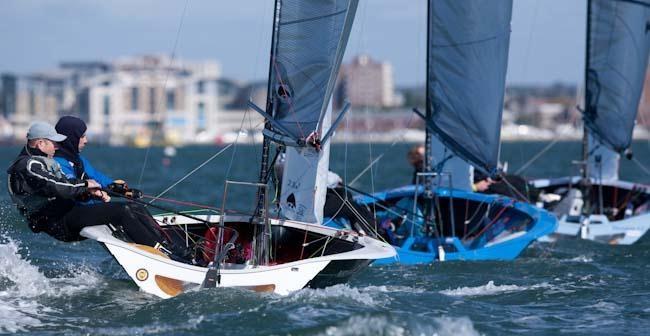
Why epoxy is re-energising the racing dinghy
by David Johnson 24 Apr 2018 21:00 AEST

Epoxy is re-energising the racing dinghy © Wessex Resins & Adhesives
The Merlin Rocket. The Osprey. The 505. The Mirror. The International Moth. What do all of these classic dinghy designs have in common? They're experiencing a resurgence in popularity – and that's largely thanks to epoxy resin. West System International technical guru David Johnson explains why.
Dinghy racing has its roots in the 1940s and 1950s. Plywood started to replace solid-plank construction and that alone led to a wave of new dinghy designs hitting the market, launching a brand new craze for dinghy racing.
More recently, many of these classic boats have been constructed with polyester resin. However, polyester could never allow these classes to realise their full potential.
This is for two key reasons:
- You can't build light with polyester
Every design racing boat needs to be built to class rules. It's these rules that keep the race closely competitive and test the sailing ability of the crew. For many classes, builders must construct to a specific weight – but the problem with polyester is that it's heavy. If you're building a Mirror dinghy with a hull that weighs, say, 38 kilos, you've got to use minimal polyester to keep it at that weight. Which leads to my second point...
- Polyester isn't strong
By ensuring a polyester boat stays light, you're no doubt having to cut corners with the resin and that means it's not durable. The kind of loads that a top-flight sailor will put on a racing dinghy are hugely demanding and at a microscopic level, polyester micro-cracks when it's stressed. This can cause the dynamic feeling of the boat to disappear.
Polyester resin basically gives racers no good reason to invest in these classic racing classes. Epoxy, however, is changing all that.
Strong, robust, revitalized
Epoxy is completely re-energising some of these older dinghy classes, due to its ability to create boats that are lightweight, stiff and durable.
The Fireball and the Merlin Rocket, for instance, are now built in PRO-SET® epoxy. Hartley Boats launched its Mark 5 Osprey in 2016. It was the first remodelling in ten years and PRO-SET epoxy was deliberately chosen to help them create a more lightweight and robust boat.
The success of these classes is clear for all to see. At the Merlin Rocket national championships in Whitstable in 2015, 71 boats competed against each other and Salcombe Merlin Week regular attracts 120 boats. The Fireball also enjoyed an equally impressive turnout at the 2015 World Championships. Plus, just look at how well the Exocet Moth is doing – thanks to her lightweight epoxy hull and epoxy-infused foils.
If you think about all this from an investment perspective, it makes real sense. A top-flight International Moth with a couple of sails and a spare set of foils costs the best part of £20,000. Nobody is going to buy into that if it's fragile and it breaks after the first nosedive. For race-winning moves, you need the best equipment possible: the best mast, the best sails, the best foils. That's exactly what epoxy gives you. It's an exciting time in the world of dinghy racing!
To find out about WEST SYSTEM and PRO-SET products, visit the products pages on the West System International site.
Find more articles like this one on epoxycraft.com